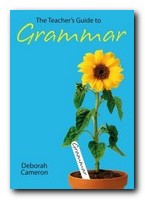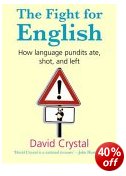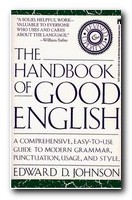free pages from our English Language software program
Stylistic analysis – definition
![]() Stylistic analysis in linguistics refers to the identification of patterns of usage in speech and writing.
Stylistic analysis in linguistics refers to the identification of patterns of usage in speech and writing.
![]() Stylistic analysis in literary studies is usually made for the purpose of commenting on quality and meaning in a text.
Stylistic analysis in literary studies is usually made for the purpose of commenting on quality and meaning in a text.
Examples
![]() A stylistic analysis of a roadsign which reads NO LEFT TURN might make the following observations.
A stylistic analysis of a roadsign which reads NO LEFT TURN might make the following observations.
- The statement is a command.
- It is cast in the imperative mode.
- The statement lacks a subject and a verb.
- These are implied [THERE IS].
- The statement is unpunctuated.
- Capitals have been used for emphasis.
- Simple vocabulary to suit wide audience.
- Extreme compression for rapid comprehension.
- Form entirely suited to audience and function.
Use
![]() In linguistics the purpose of close analysis is to identify and classify the elements of language being used.
In linguistics the purpose of close analysis is to identify and classify the elements of language being used.
![]() In literary studies the purpose is usually an adjunct to understanding, exegesis, and interpretation.
In literary studies the purpose is usually an adjunct to understanding, exegesis, and interpretation.
![]() In both cases, an extremely detailed and scrupulous attention is paid to the text.
In both cases, an extremely detailed and scrupulous attention is paid to the text.
![]() This process may now be aided by computer programs which able to analyse texts.
This process may now be aided by computer programs which able to analyse texts.
![]() NB! At this point, the study of language moves into either ‘stylistics’ or ‘literary studies’.
NB! At this point, the study of language moves into either ‘stylistics’ or ‘literary studies’.
![]() Stylistic analysis is a normal part of literary studies. It is practised as a part of understanding the possible meanings in a text.
Stylistic analysis is a normal part of literary studies. It is practised as a part of understanding the possible meanings in a text.
![]() It is also generally assumed that the process of analysis will reveal the good qualities of the writing.
It is also generally assumed that the process of analysis will reveal the good qualities of the writing.
![]() Take for example the opening lines of Shakespeare’s Richard III:
Take for example the opening lines of Shakespeare’s Richard III:
Now is the winter of our discontent
Made glorious summer by this sun of York;
![]() A stylistic analysis might reveal the following points:
A stylistic analysis might reveal the following points:
- the play is written in poetic blank verse
- that is — unrhymed, iambic pentameters
- the stresses fall as follows
- Now /i/s the w/i/nter /o/f our d/i/scont/e/nt
- [notice that the stress falls on vowel sounds]
- the first line is built on a metaphor
- the condition of England is described in terms of the season ‘winter’
- the term ‘our’ is a form of the royal ‘we’
- the seasonal metaphor is extended into the second line …
- … where better conditions become ‘summer’
- the metaphor is extended even further by the term ‘sun’
- it is the sun which appears, ‘causing’ the summer
- but ‘sun’ is here also a pun – on the term ‘son’…
- … which refers to the son of the King
- ‘York’ is a metonymic reference to the Duke of York
![]() In a complete analysis, the significance of these sylistic details would be related to the events of the play itself, and to Shakespeare’s presentation of them.
In a complete analysis, the significance of these sylistic details would be related to the events of the play itself, and to Shakespeare’s presentation of them.
![]() In some forms of sylistic analysis, the numerical recurrence of certain stylistic features is used to make judgements about the nature and the quality of the writing.
In some forms of sylistic analysis, the numerical recurrence of certain stylistic features is used to make judgements about the nature and the quality of the writing.
![]() However, it is important to recognise that the concept of style is much broader than just the ‘good style’ of literary prose.
However, it is important to recognise that the concept of style is much broader than just the ‘good style’ of literary prose.
![]() For instance, even casual communication such as a manner of speaking or a personal letter might have an individual style.
For instance, even casual communication such as a manner of speaking or a personal letter might have an individual style.
![]() However, to give a detailed account of this style requires the same degree of linguistic analysis as literary texts.
However, to give a detailed account of this style requires the same degree of linguistic analysis as literary texts.
![]() Stylistic analysis of a non-literary text for instance means studying in detail the features of a passage from such genres as:
Stylistic analysis of a non-literary text for instance means studying in detail the features of a passage from such genres as:
| Instruction | notes for programming your video-recorder |
| Information | a history text book |
| Persuasion | an advertisement or a holiday brochure |
![]() The method of analysis can be seen as looking at the text in great detail, observing what the parts are, and saying what function they perform in the context of the passage.
The method of analysis can be seen as looking at the text in great detail, observing what the parts are, and saying what function they perform in the context of the passage.
![]() It is rather like taking a car-engine to pieces, looking at each component in detail, then observing its function as the whole engine starts working.
It is rather like taking a car-engine to pieces, looking at each component in detail, then observing its function as the whole engine starts working.
![]() These are features which are likely to occur in a text whose function is to instruct:
These are features which are likely to occur in a text whose function is to instruct:
| imperative or command |
‘remove the outer covering’ |
| direct address | ‘check voltage system before you install the unit’ |
| numbered points | [because sequencing is important in carrying out a procedure] |
| technical terms or jargon |
‘piston’, ‘carburettor’, ‘spark plug’ |
| diagram with call-out labels |
[an extra level of communication to aid understanding] |
![]() Features are dealt with in three stages, as follows:
Features are dealt with in three stages, as follows:
identify — describe — explain
![]() The features chosen from any text will be those which characterise the piece as to its function. They will be used by the analyst to prove the initial statement which is made about the linguistic nature of the text as a whole.
The features chosen from any text will be those which characterise the piece as to its function. They will be used by the analyst to prove the initial statement which is made about the linguistic nature of the text as a whole.
![]() This method puports to be fairly scientific. A hypothesis is stated and then proved. It is a useful discipline which encourages logical thought and can be transferred to many other areas of academic study.
This method puports to be fairly scientific. A hypothesis is stated and then proved. It is a useful discipline which encourages logical thought and can be transferred to many other areas of academic study.
![]() This is one reason why the discipline of stylistic analysis is so useful: it can be applied to a variety of subjects.
This is one reason why the discipline of stylistic analysis is so useful: it can be applied to a variety of subjects.
Self-assessment quiz follows >>>
© Roy Johnson 2004
English Language 3.0 program
Books on language
More on grammar


